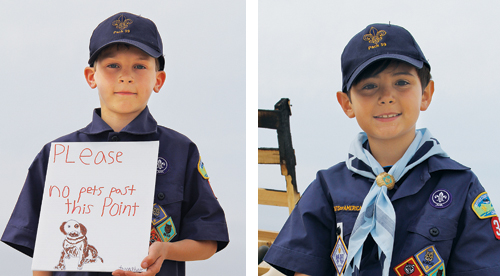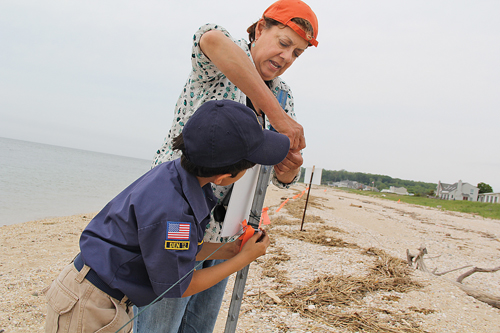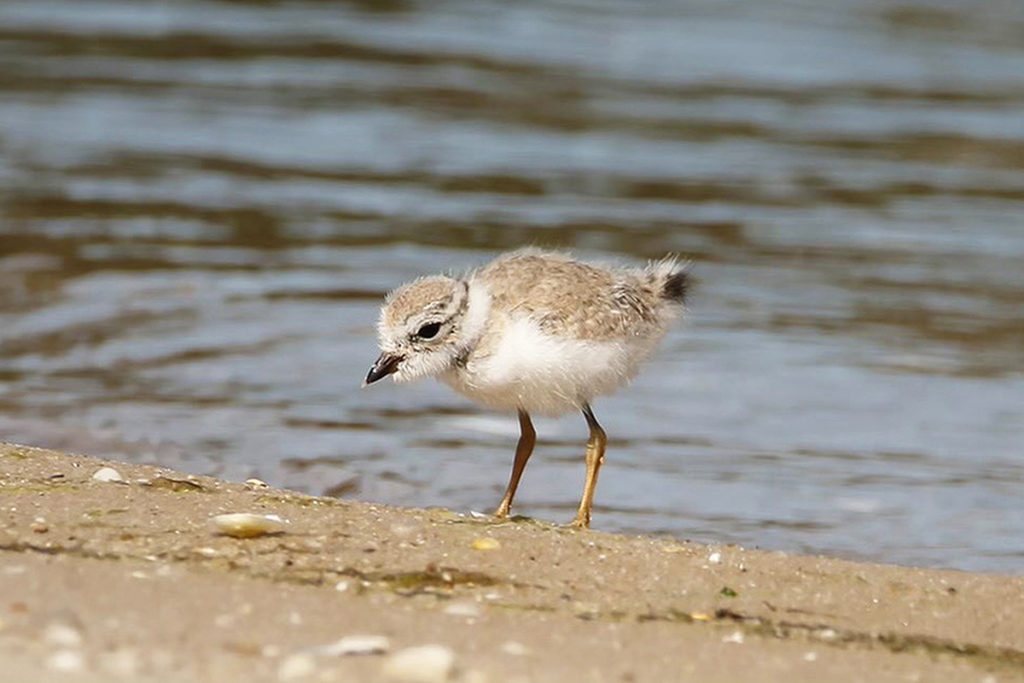To protect plovers, Audubon Society turns to kids

North Fork children have teamed up to help protect the piping plover, a seaside bird so tiny it often goes unnoticed by beachgoers.
Every April through August, these federally threatened — and in New York State, endangered — birds nest on the bare sand of local beaches, where they’re subjected to weather fluctuations, natural predators and people and their pets.
And local environmentalists have found that, for whatever reason, people tend to ignore the red, black and white Department of Environmental Conservation signs that mark known nesting areas.
So, they’ve recruited local kids to help with their efforts to protect the birds.
- See Also: The life of a plover
About 100 students from Cutchogue East Elementary School, New Suffolk Common School and Cub Scout Pack 39 of Mattituck spent time this spring with North Fork Audubon Society volunteers, learning about the vulnerable birds. To help safeguard them, the children created hand-drawn signs warning people of nesting areas.
And the plovers need the help, as they’re just “little ounces of fluff,” said Diana Van Buren, an Audubon Society volunteer who spearheaded the project.
While the government-issued signs might go overlooked, the colorful and creative homemade signs the children drew are sure to be eye-catching and play on people’s consciences, Ms. Van Buren said.
“Research suggests that beachgoers pay more attention to signs created by children,” she said. “The hope is to raise awareness that these birds see humans, like you and me, and our pets, as a threat. How do they know that your dog is nice?”
When threatened, plovers — both male and female — walk away from their nests, drawing attention to themselves instead of their nests as a diversion strategy. But in doing so, they expose their eggs, and babies, to predators.
Historically, there were 24 areas in Southold Town beaches known to play host to piping plover nesting areas, but that number has greatly diminished, said Kerri Dikun of the state’s Audubon Society. This year, nine nesting couples have been identified in six different areas of the town, she said.
The North Fork Audubon Society has helped protect and monitor these species for the past two decades, recently teaming up with the Group for the East End in 2012, strengthening the monitoring initiative.









